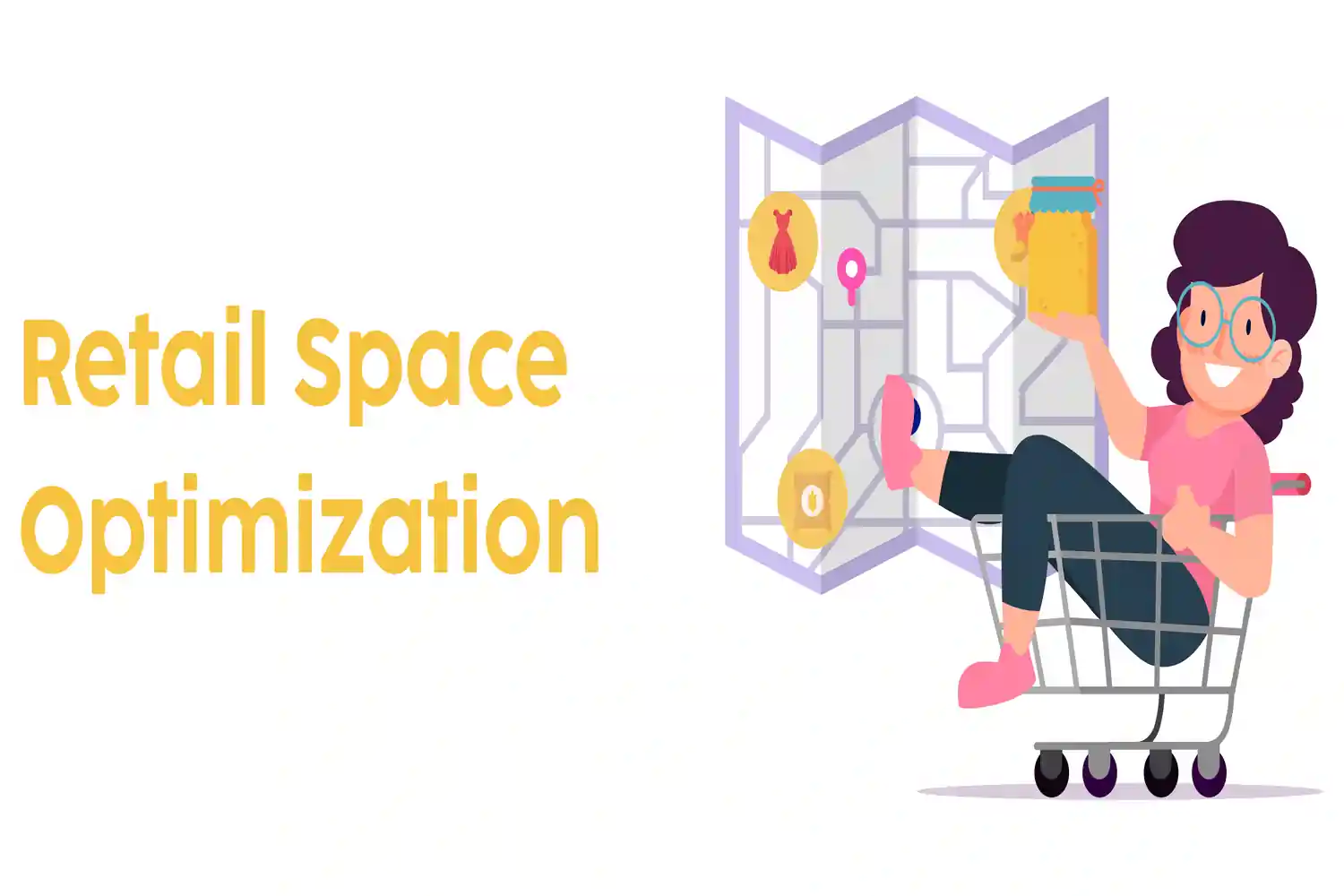Explore how heatmaps and strategic layouts can transform retail space management, optimizing customer flow, enhancing product visibility, and boosting sales. Learn innovative techniques to make the most of every square foot in your store.
Highlights
An enthusiastic developer and skilled business management expert with over a decade of experience in the field

In retail, running a retail store efficiency is very important. A store needs to attract customers, keep them interested, and encourage them to buy products while ensuring everything runs smoothly. One way to improve retail space management is by using heatmaps and smart store layouts. This article will explain how these tools help optimize retail stores and the role of mobile app development and web development services in this process.
Heatmaps are visual presentations that show the movement of customers within the store. They highlight areas where customers spend time, what products they look at, and where most people walk. Retailers gather this information using different methods, such as in-store sensors or software that tracks customer movements.
Through analyzing heatmaps, it is possible for retailers to be able to assess the areas within the store that are highly frequented while also considering the undesired parts of the store. Therefore, this shared experience enables retailers to improve the effectiveness of their marketing campaigns and strategies, like the arrangement of the products in the store and the promotion of the products.
The selection of a suitable layout is determined by the nature of the merchandise on offer and the planned customers. Retailers can also modify their layouts from time to time after carrying out heatmap data analysis to suit the specific tastes of their customers.
To use heatmaps effectively, retailers should focus on key areas:
Heatmaps show which location of the store has the most traffic. Retailers can use this information to place popular products in these zones, improving the chances of sales. For example, placing famous items near the entrance or in areas where customers tend to gather can lead to higher visibility and sales.
Not all store areas are likely to attract several customers. These slow spots could be represented by heat maps. The store owners might attempt to rotate everything so that more people pass through those sections. For instance, they could relocate a clearance rack from one section that has little traffic to a section that would generate high traffic.
Every consumer wants to complete a transaction without unnecessary hassle, and the checkout area directly affects this. Retailers can use heatmaps to discover how the accessibility of checkouts works and where consumers might pause for a second. Using this data, retailers can better format the layout of the location, cleaning out plugging and increasing foot traffic around the location for a more efficient flow through the area and greater customer satisfaction.
Planning to build a grocery app? Discover Digittrix's must-have features for a successful on-demand grocery app!
While heat maps and layout adjustments are essential, technology also plays a significant role. Mobile app development and web development services help retailers improve operations and enhance the customer experience.
Today, mobile applications have become a necessity for almost all retail businesses. They enable customers to search for the products, view prices, and order products straight from their devices. A well-prepared mobile app can do much more than just that, providing the users with information about ongoing offers, customers’ loyalty status, and recently added items, thus encouraging the consumers to return more often.
Moreover, applications can use GPS technology to provide further interaction with the client by offering specific suggestions depending on the customer’s location within the store. For instance, when a customer approaches the shoe area of the store, the application can send alerts concerning ongoing discounts or recently in-stock shoes of that category.
Retailers can also connect their physical and online stores through web development. For example, customers can check product availability online before visiting the store, saving time and enhancing their shopping experience.
The creation of a powerful e-commerce platform is important for any retail business aspiring for growth. Services of website design and development provide a proposition that allows the creation of websites portraying products and services, integrating online payment facilities, and enabling their customers to undertake hassle-free online transactions.
Moreover, with the help of web design and development, retailers can also integrate their offline and online stores. For example, customers can check the availability of specific products before visiting the shop, thus saving their time and making shopping more enjoyable.
Integrating heatmaps with web and mobile app development creates a comprehensive system for enhancing retail efficiency. Here’s how:
Mobile applications are capable of tracking how consumers interact within the store. If this app data is connected with heatmap analysis, it can provide a much better understanding of consumer behavior for the retailer. For example, if a heatmap shows higher footfalls in a particular product display area, the retailer may use app data to understand if customers looking at that area are searching for that particular product or similar items.
The use of heatmap data may also serve to inform marketing tactics for retailers. For example, if a specific zone of the store is crowded, retailers can engage clients through their mobile application by offering discounts within that particular area. This marketing tool can bring up sales and enhance the customer’s experience.
By analyzing online shopping store behavior, retailers can identify trends that influence physical store layouts. For example, if certain products are often searched for online but have low visibility in-store, retailers can adjust their layouts accordingly.
With the growth of e-commerce, there are also physical store design practices that can be followed. For example, if certain items are frequently viewed online, but are not highly stocked in the physical store, the retailers can adjust their layouts accordingly.
To effectively use heatmaps and layouts to enhance retail store efficiency, retailers should follow these best practices:
Improving the efficiency of a retail store calls for a combination of customer behavior studies, store layout design, and technology such as mobile and web app development. For example, stores can use heatmap migration patterns studies to strategize high-traffic area designs, low-traffic area remodelling, and movement of checkout points.
Technology can also improve the shopping experience by helping retailers communicate with customers and easing the running of the business. Most importantly, as retail space management best practices suggest, you need to be adaptable and ready to experiment with new ideas so that you can optimize the chances of addressing the customer’s objectives effectively and attractively. In this era of retail evolution, these approaches will be necessary for orienting towards the targeted goals.
In today’s competitive retail landscape, effective space management is crucial for optimizing customer experiences and maximizing sales. For any retail business, understanding how to utilize your space isn’t just about aesthetics – it’s about creating an engaging environment that drives customer interaction and loyalty. At Digittrix, we specialize in web and mobile app development and leveraging advanced analytics and heatmaps to improve retail layouts, confirming that every square foot is strategically used.
With over 14 years of experience, our team at Digittrix is committed to transforming retail spaces through data-driven design and layout optimization. Ready to elevate your retail strategy?
Call us at +91 8727000867 or email us at digittrix@gmail.com

Do you need help in Mobile App development?




Join over 1500+ businesses we've already helped!
A heatmap in retail is a visual representation that shows where customers spend the most time in the store. It helps retailers identify high-traffic areas and improve product placement.
Heatmaps help retailers identify high-traffic and low-traffic areas, allowing them to adjust store layouts for better customer flow and product visibility, ultimately increasing sales.
Common store layouts include grid layout, free-form layout, racetrack layout, and herringbone layout. Each design has a unique impact on customer navigation and product display.
Mobile apps allow customers to browse products, check prices, and receive personalized promotions. They also improve convenience by helping users navigate the store and access special offers.

©2025Digittrix Infotech Private Limited , All rights reserved.